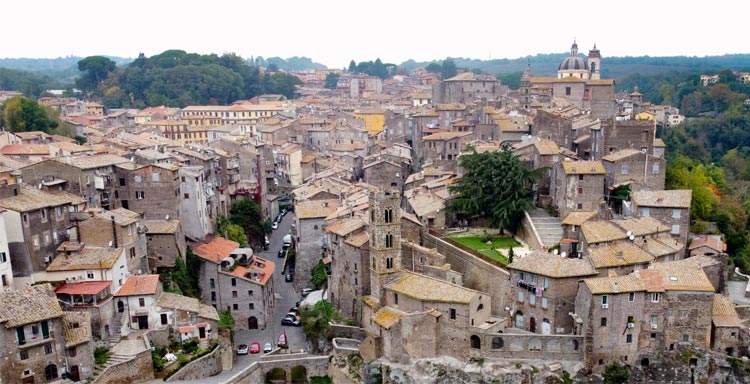Ronciglione is the Borgo dei Borghi 2023
It is Ronciglione the “Borgo dei Borghi” 2023: the town in the province of Viterbo won this year’s competition that each year, traditionally on Easter Day, pits twenty Italian villages (one per region) against each other on Rai Tre as part of the successful program Kilimangiaro. Ronciglione, the nominee for Lazio, triumphed ahead of Sant’Antioco (Sardinia) and Salemi (Sicily) and in the roll of honor follows Soave, which had won in 2022. The competition, which began on October 23, 2022, first included a public vote, and then the judgment of the jury of three experts (art historian Jacopo Veneziani, geologist Mario Tozzi and chef Rosanna Marziale. The village that obtained the highest percentage in the summation between the votes cast directly by the home audience, through “web voting,” and those of the jury of experts won.
“A great emotion and another important recognition that adds to that of the Most Beautiful Villages of Italy and to the media and tourist resonance our town has enjoyed in recent months,” said Mayor Mario Mengoni. “This achievement will be a further boost to prepare ourselves in the best possible way for the approaching summer season, making us strong in our welcome and our many beauties.”
The hamlet
Perched on the southern hills of the Cimini Mountains, Ronciglione is one of the main centers of Tuscia. First mentioned in 1103, the village was probably founded in the 11th century (the foundation date may be 1045). Beginning in 1526 it came into the possession of the Farnese family, who held it until 1649 and under whom it spent its period of greatest splendor, experiencing an important urban expansion: some of the village’s main attractions, such as the Fontana Grande, Porta Romana, the Church of Peace, and the Mint Palace, are from this period. The 1671 cathedral, on the other hand, is baroque: inside there is a polychrome marble altar with an altarpiece by Giuseppe Ghezzi depicting the Madonna of the Rosary, and then again a 15th-century triptych by a Viterbo painter, a painting of the Assumption, and a wooden statue of St. Bartholomew, patron saint of Ronciglione.
It is not known where the name comes from: probably from the fact that the town stands on a rounded cliff(rotondus or rondus cilio, hence “Ronciglione”). For centuries it was one of the most active centers in the area, home to manufactures in which iron, paper, and ceramics were worked. It was also iportant typographic center, especially in the seventeenth century (here Alessandro Tassoni’s Secchia rapita and Torquato Tasso’sAminta were printed for the first time), as well as literary, being moreover the seat of numerous academies (that of the Desiderosi, the Accademia Cimina, the Accademia Erculea and others). Finally, in 1728, it assumed the title of City under Pope Benedict XIII.
Because of its well-preserved medieval center, Ronciglione has been the setting for countless films and television series (among many, we need only mention L’armata Brancaleone). Among the main monuments to visit are the ancient Rocca, which was the seat of the Farnese family, the Palazzo Comunale, the Fontana Grande, the 17th-century Cathedral of Saints Peter and Catherine designed by Carlo Rainaldi, the very ancient church of Sant’Andrea of which remains, the small Romanesque church of Sant’Eusebio, the scenic Santa Maria della Provvidenza, and the Porta Romana built in 1618 by Odoardo Farnese, a sort of symbol of the village. Also worth visiting is the House Museum of the Venerable Mariangela Virgili, where the Carmelite tertiary lived and about whom a beatification process is underway. Unmissable then, in the surroundings, is a walk to nearby Lake Vico.
 |
| Ronciglione is the Borgo dei Borghi 2023 |
Warning: the translation into English of the original Italian article was created using automatic tools. We undertake to review all articles, but we do not guarantee the total absence of inaccuracies in the translation due to the program. You can find the original by clicking on the ITA button. If you find any mistake,please contact us.































